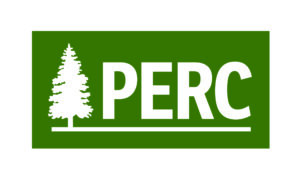
Thanks to Spencer Banzhaf for his article, “The Case for Cap-and-Trade” as a market application to fossil fuel use. Certainly, once a cap-and-trade system is operating, prices would be set by market trading, responding either to pricing (or taxing) emissions; or setting a quota on allowable emissions. The notion of the government setting the price would be anathema to most free-market folks. However, there is just as much room for mischief if government determines emission quotas, which represent an indirect way of setting prices. Professor Banzhaf presents a distinction without a difference.
The larger problem is that cap-and-trade would impede the production and use of energy. U.S. energy consumption correlates directly with GDP and jobs. If we are to avoid a drop in standard of living, and retain our standing as a world economic power, we must recognize that reliable, affordable energy is essential.
The notion of increasing U.S. energy production—dominated by fossil fuels for the next 30 years—raises the hackles of those who believe in anthropogenic global warming (AGW). But the wheels are coming off the AGW story, based on objective integrated science from many fields other than just research and modeling of Earth’s current and recent climate:
1) Historical documentation of the Medieval Warming Period and the Little Ice Age, demonstrating that the recent warming of Earth’s atmosphere is not unusual.
2) Geological evidence showing today’s climate as part of cyclical glacial-interglacial fluctuations over the past million years, and demonstrating that rises in temperature precede rises in CO2, not the other way round. Sea level has been rising for about 14,000 years, and it is not accelerating.
3) Recent experiments at CERN, the nuclear particle accelerator in Geneva, directed by Dr. Jasper Kirkby, support Danish cosmologist Henrik Svensmark’s theory that cosmic rays influence the formation of clouds in Earth’s atmosphere, and that periodic solar magnetic flares (sunspots) interfere with cosmic ray flow into Earth’s atmosphere. The correlation of solar irradiation with global temperature has long been recognized, but until Svensmark’s theory and Kirkby’s experimental confirmation, it was thought that such variations were too small to be effective without some powerful feedbacks. Now it looks like solar effects, not CO2 concentration, are the dominant cause of variations in global temperature.
Cap-and-trade is becoming a solution in search of a problem.
—Peter R. Rose, Ph. D. (Geology)
Austin, Texas
Flawed Science
I strongly disagree with the article by Professor Spencer Banzhaf in the summer issue of PERC Reports defending “cap-and-trade” to reduce carbon dioxide emissions to curb global warming.
First, the climate is not warming. Second, carbon dioxide emissions do not cause the climate to warm. Third, cap-and-trade would have disastrous consequences for the U.S. economy. Fourth, if China and India do not curb emissions, which they will not, curbing emissions in the United States will be fruitless.
Contrary to assertions by former Vice President Al Gore, the science relating to global warming is not settled. Over 30,000 scientists (9,000 PHDs) in the United States sent a petition to the president protesting the idea that human caused carbon dioxide is causing global warming. There is growing evidence that the “science” supporting global warming is flawed, and heavily influenced by over $80 billion in government grants.
I do appreciate the professor’s support for free market principles.
—Bill Moshofsky
Beaverton, Oregon
Win a bid does not equal save a wolf
Thank you for continuing to provide stimulating food for thought. I read Mr. Workman’s piece “The Call—or Cull—of the Wild” and found the idea of an open auction interesting. However, Mr. Workman does not seem to fully understand how wildlife management, particularly the hunting and permitting system, works.
My understanding of the hunting license and permit system (in Montana and other states) is that more permits are sold than animals are killed, because there is no guarantee of hunting success. There is not a simple one-toone ratio of permits to wolves allowed to be killed. So, if the quota of wolves to be killed by hunters is 75, substantially more than 75 licenses will be sold, and the hunting season would close once the reported harvest neared 75 animals.
The number of wolves to be harvested is determined by Montana Fish Wildlife and Parks and other state game management agencies based on biological and environmental criteria related to the sustainability of the wolf population, other species, and habitat considerations. It is not determined by huntersÂf willingness to pay. Hunting is one means of controlling animal populations. It happens to be a means that has a revenue component.
Thus, a person that wishes to “retire” a wolf permit or purchase a permit with no intent of killing an animal would not be guaranteed that one less wolf would be killed as a result of winning the bid. The number of wolves killed by hunters might be reduced, but then the number that would be killed by agency personnel would need to increase to achieve the “peer-reviewed scientific quota.” Under this circumstance, it seems unlikely that someone wanting to save a wolf would participate in an auction where winning the bid would not produce the desired effect.
Determining whether or not there is a wolf hunting season based on who is willing to pay more.potential wolf hunters vs. wolf advocates.is the current situation. Only it is lawyers and courts collecting the fees and setting the quotas, rather than state wildlife agencies. If Mr. Workman is advocating that wildlife be managed by markets, then perhaps we should just cut to the chase and put the Endangered Species Act up for sale.
Todd A. Morgan, Forest Industry Research
University of Montana, Missoula


